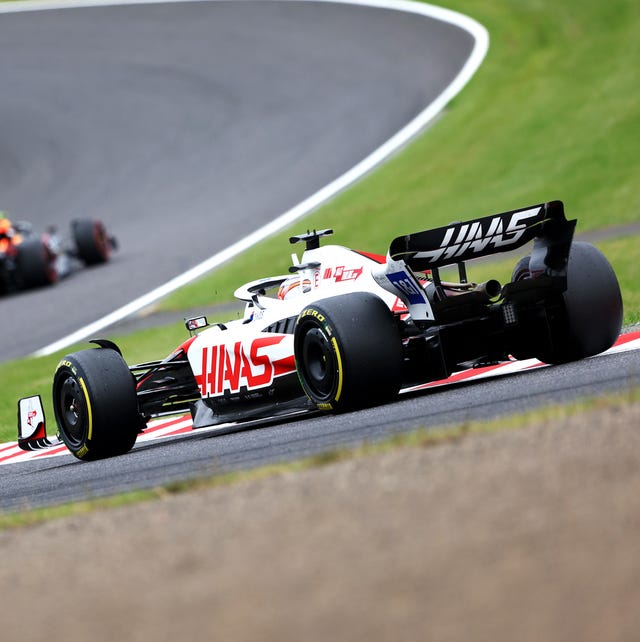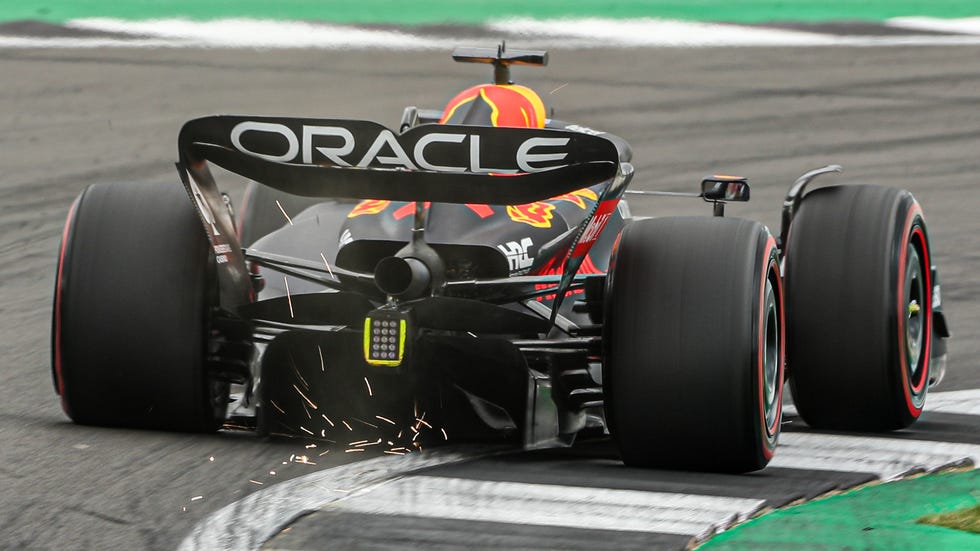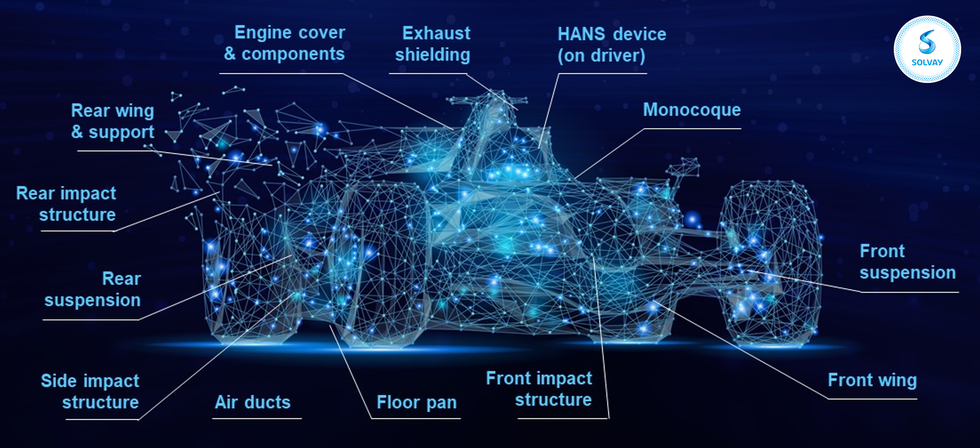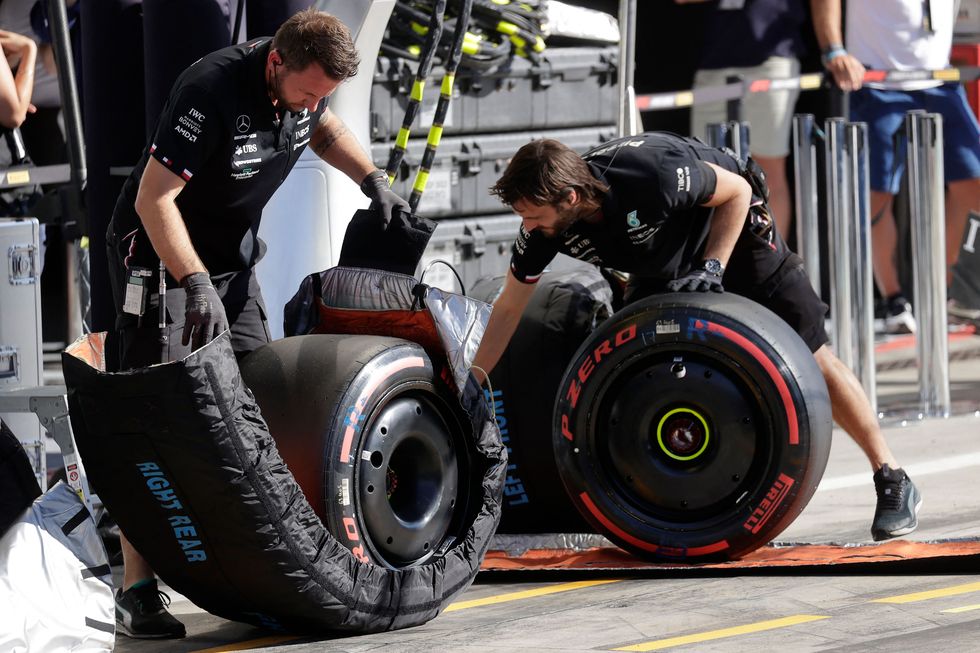Stateside interest in Formula 1 has grown exponentially ever since Netflix’s Drive to Survive series dropped in 2019; 2022 saw the addition of a second race on U.S. soil with the Miami Grand Prix, and the F1 circus will be racing on the streets of Las Vegas later this year. As we approach the first race of the 2023 season this weekend in Sakhir, Bahrain, we wanted to dig deeper into the secrets of what makes these cars the fastest on the planet. They might look like fighter jets on wheels, but they’re actually fairly easy to understand.
Aerodynamics
For all intents and purposes, Formula 1 cars are upside-down airplanes. While the wings of a plane provide lift, F1 cars utilize the opposite effect—called downforce—to keep them stuck to the track. However, it’s important to find the right balance between downforce and drag.
Downforce is great, as it pushes down on the tires to keep the car stuck to the track. Having said that, F1 cars produce more downforce as they go faster, which can slow them down on straightaways. This gives aerodynamicists a bit of a headache, as they want to maximize straight-line speed while maintaining sufficient downforce for the corners.
Teams would commonly get around this phenomenon by building front wings that flex at the extreme loads they experience on straightaways—with cars often breaking 200 mph at the high-speed tracks on the calendar. When the wing flexes, it decreases its angle of attack, allowing for more straight-line speed from the car at the cost of less downforce. Red Bull was guilty of maybe being a little bit too aggressive with this in previous years; you could literally see the wing bending while watching the onboard camera shots.
Thankfully, F1 came up with another solution called the Drag Reduction System (DRS). First implemented during the 2011 season, it lowered a flap in the rear wing to decrease the amount of drag on straightaways—increasing straight-line speed. During the race, there are certain zones where drivers can activate DRS when they are at least one second behind the car in front.
Material Science
Formula 1 cars need to be incredibly strong without being heavy. This is why the majority of components on an F1 car are made entirely from carbon fiber—a material that was first created for use in racing cars.
Still, all of these parts scattered throughout the car need to cope with vastly different strength and temperature requirements. Carbon fiber is made by weaving carbon “fibers” and bonding them together in a resin. Teams are able to mess around with carbon-fiber layups—different weaves—as well as different resins to optimize the thermal and structural integrity of different parts. “High-end teams may have eight or nine types of resin that are combined with different fibers,” says Mark Steele, Customer Engineering Manager at Solvay, a major provider of composite components for F1 teams. “They might be taking 30-40 different types of product just for one car.” Teams are always striving to make parts that are exactly as strong as they need to be. Too strong and they’ll weigh the car down. Too weak, and they’ll fail.
Tires
Being the fastest racing cars on earth, Formula 1 cars need tires that can cope with extreme cornering forces and equally savage propulsion from the engine. To offer some perspective, F1 cars use turbocharged 1.6-liter hybrid engines that crank out an estimated 1,000 horsepower and 500 ft-lb of torque; they also have enough downforce to generate up to four Gs in the corners.
At first glance, you’ll likely notice that F1 cars use slick tires (without any tread) that are much wider than those in any road car. This lack of tread allows for more rubber to meet the road—therefore increasing traction. That’s great, but these race-specific tires produce next to no grip when they’re cold. F1 racing rubber is designed to work at much higher temperatures from the extreme loads they experience during a racing lap.
A lot of the F1 tire’s performance has to do with its rubber compound, which is much stickier (and therefore less durable) than you’d find on a road car. While the tires on your road car are made to last, Formula 1 rubber won’t actually make it to the end of a race—drivers are required to make a pit stop.
You’ll often see television broadcasts show teams using tire blankets to keep the rubber toasty warm before the cars leave the pit garages. These are essentially very high-performance electric blankets that wrap around the tire. This gives drivers a good starting point to warm the tires into their operating window, which is a bit of a conundrum, as drivers want the tires to be hot but not too hot—overheating is very common and means less grip for the driver.
What to Watch For
The next time you watch an F1 broadcast—especially if you’re new to the sport—appreciate the speedometer in the onboard shots that shows cornering speeds. Just last year at the Belgian Grand Prix, drivers were navigating the fast left-right sequence of eau rouge at full throttle, reaching speeds in excess of 190 mph.
Matt Crisara is a native Austinite who has an unbridled passion for cars and motorsports, both foreign and domestic. He was previously a contributing writer for Motor1 following internships at Circuit Of The Americas F1 Track and Speed City, an Austin radio broadcaster focused on the world of motor racing. He earned a bachelor’s degree from the University of Arizona School of Journalism, where he raced mountain bikes with the University Club Team. When he isn’t working, he enjoys sim-racing, FPV drones, and the great outdoors.
















